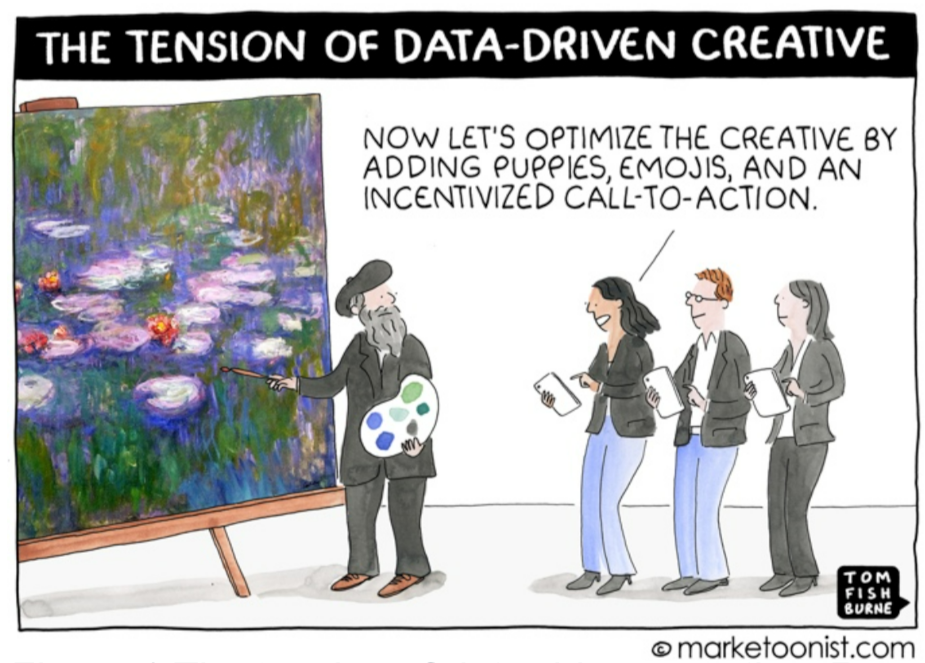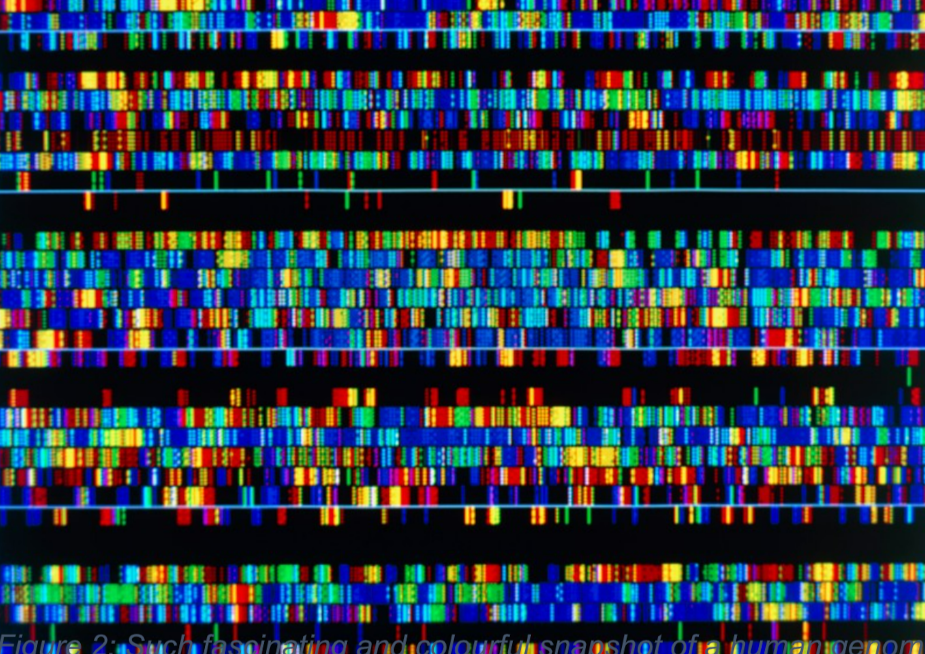
Magic Numbers: Hoang Nguyen on Why Data Shouldn't Drive Creativity

Hoang Nguyen, chief data and technology officer at Howatson+Company was previously director, digital and engineering at Appscore and executive director of engineering at CHE Proximity. Before joining Howatson+Company, Hoang led teams and designed architectures for several blue-chip enterprises such as NAB and ANZ, Samsung, Telstra, and many financial and technology start-ups.
LBB> What’s the number one question that clients are coming to you with when it comes to how they can better use data to enhance the creativity of their content and experiences?
Hoang> The most common problem everyone has is understanding their level of data maturity in the organisation.
Many businesses claim to have a data culture and might promote data-driven marketing via personalisation or tailored user experiences, but the reality is usually very different from what they claim to have achieved.
Generally speaking, clients come to us with a broader problem, and data-driven creativity is just one tool (out of many) that can help deliver a solution.
LBB> How can you make sure that data is elevating creative rather than forming a wind-tunnel effect and knocking all the interesting or unique edges off that make something distinctive?
Hoang> It’s a very interesting question, and you might not expect this answer from me: I don’t think data should drive creativity.
I have seen some “data traps” that the creative process usually falls into. One example is when optimisation based on historical “best-practice” data happens too early in the creative process. In software engineering there is a saying that “premature optimisation is the root of all evil” and I think it also applies here. Early optimisation creates distraction, brings in unnecessary complexity, and hinders the capability to think outside the box.

Figure 1. The tension of data-driven creative. Pre-mature optimisation is the root of all evils. Source: Marketoonist.com
But an even more dangerous temptation is the “cool factor” of data-driven creative. Concepts like machine-learning, AI and big data can end up being forced into a creative idea for the sake of it, without being properly understood. In this situation, 'data' offers zero value at best – and at worst, it’s downright misleading. It’s this kind of misuse that gives data science and data-driven marketing a bad name, unfortunately.
To me, creativity should always be problem-driven, working to solve a challenge faced by a brand or its customers. In the service of this, data becomes an excellent tool that helps clarify the problem to be solved, foster a collaborative process, elevate the output, and evaluate the effectiveness of the creative once it’s out in the world.
Data is a unique tool in the sense that even though it represents existing, historical and fixed facts, it can be used to look forward: creating and innovating through data linkage, pattern, and regression analysis.
Techniques such as data visualisation turn data scientists into creative storytellers who can help teams understand the problem to be solved. By revealing insights about an audience, the market and the economic landscape, data helps give a creative idea the longevity to become something larger than a one-off campaign. And finally, with strong reporting and unbiased analytical tools, data can inspire creativity in its purest form: providing starting points for exploration, experimentation, making mistakes, adapting and iterating.
LBB> Can you share with us any examples of projects you’ve worked on where the data really helped boost the creative output in a really exciting way?
Hoang> I am fond of the statement that data empowers empathy and inclusion. Data helps marketers understand their audience and their challenge, so that they can better not only the marketing, but also tailor their products, to address and elevate the lives of their customers.
For Belong, the “It feels good to belong” platform is a case of utilising data to support the creative output, without detracting from the messaging.
We used data to understand the Belong customers – linking customer geographical data with ABN, NBN Co, low-level network infrastructure data, and other first party datasets to understand the best way to reach them, including those in remote areas with limited internet connectivity. Working with Belong, we were able to make the creative idea accessible yet cohesive in both online and offline formats. We used a range of quant and qual research tools and analytical data from Belong’s digital platforms to understand the way our audience consume content – especially those with impairments or disabilities. That helped us ensure content across all platforms was highly accessible while retaining the beauty and uniqueness of the creative. Addressing these challenges also fed back to the theme of celebrating inclusion.
Needless to say, the whole team from both Belong and H+Co are very proud of what we have achieved.
LBB> More brands are working to create their own first party data practice - how can a brand figure out whether that’s something that is relevant or important for their business?
Hoang> Creating your own data practice is a great idea. It would be a massive undertaking for any brand, but the need to build and utilise first party data is slowly becoming a necessity. So it’s not a matter of if, but how.
First and foremost, I believe most businesses already possess a certain level of first party data maturity. First party data is not only used for marketing purposes, organisations rely on these datasets to perform their day to day business – like an eCommerce store’s transactional data and sales report, their existing customer base sitting in a CRM, or their web analytics. What brands are probably looking to build is a data-driven marketing practice allowing marketers to unlock insights and activate the existing datasets.
Secondly, as the public privacy awareness is heightened, the different walled gardens lock in tighter due to regulatory constraints, and third party cookies draw closer to being phased out, the pressure increases for brands to use their own first party data to orchestrate customer insights and inform their marketing.
Finally, many marketers will find profound value by onboarding the right data experts to help them build applied data-science and data-driven marketing practice. My belief has always been that being an expert is to know what not-to do, and the quirks of the platforms – knowledge which you can only gain with experience. Reputed data-enabled marketing agencies are excellent partners, as we have seen the pitfalls as well as the benefits, helping build solutions those are tailored to a brand problem, rather than executing in a theoretical textbook way.
LBB> We talk about data driving creativity, but what are your thoughts about approaching the use of data in a creative way?
Hoang> To most, data exists in the form of a boring spreadsheet, or dry numbers in campaign reports, or complex undecipherable series of code. But I like to think differently about data - very differently.
Data can be represented beautifully via visualisation. It can tell a story, invoking the audience’s curiosity to find secret patterns and unexpected links between facts and datasets and bring them to life. Let’s have a look at some examples:
How wealthy is a billionaire? Well this incredibly simple interactive visualisation tool created by Developer Matt Korostoff puts things in perspective. We think we understand what numbers mean, but the tedious scrolling action together with how the different values are drawn to scale really paint the picture here.
I personally am a big fan of ABC News’ Odyssey format – the master-head’s iconic data journalism. I always feel excited whenever there is a new edition. Some of the best ones demonstrate how life has changed compared to 40 years ago, or the incredible special on DeepFake. It is a challenge not to keep scrolling through these informative and beautifully crafted experiences.
Recently I came across another mind-blowing way to view data by connecting it to biological life. While the digital world encodes data as series of 0 and 1, real life nature encodes biological lives in four types of DNA molecules (A, C, G, and T). In what feels like science fiction, we can now sequence an individual’s whole genome as a “full snapshot” and perform analysis. This means we can literally edit genes as if they are computer program code (with the technology known as CRISPR. It also gives rise to the Information Theory of Aging, which suggests the process of aging is due to our cells losing data where they forget their original encoded purpose – which means the restoration of this data (via transplantation) could meaningfully prolong life.

Figure 2: Such fascinating and colourful snapshot of a human genome “data” at the Welcome Sanger Institute near Cambridge, UK.Credit: James King-Holmes/Science Photo Library.
While I’m not encouraging all readers to become a genome biologist, data journalist, or a visualisation engineer, I hope these fascinating perspectives about data inspire a new way of thinking about it.
LBB> "Lies, damned lies, and statistics" - how can brands and creative make sure that they’re really seeing what they think they’re seeing (or want to see) in the data, or that they’re not misusing data?
Hoang> 73.6% of all statistics are made up.
And I hope you see what I just did there.
Let’s first look at the problem.
Most are familiar with misleading data representation. This type of statistical misuse uses techniques like quoting results by percentages or relative values (of a relatively small raw base) to exaggerate results, manipulating a visualisation (i.e. cutting or exaggerating an axis on a graph), or cherry picking the numbers to fit a narrative.

Figure 3. The Argentinian TV channel C5N presented the number of COVID-19 test with disproportional y-axis to hide the terrible testing performance in the country. Source: C5N
As with the example above, a set of factual data is framed to depict a false narrative. Very unfortunately, this type of statistical manipulation is on the rise in our era of disinformation.
However, as tricky as data misrepresentation situation is, I’d argue that the bigger problem is where data is presented and utilised in good faith, but the results have grace errors due to the quality of data, and incompetence in collection or sourcing, processing, and modelling. The latter problem is more dangerous as the errors can’t be easily recognised, and might take years to be discovered and rectified – or worse, they never are.
Knowing the problem, what would be the recommendations I have for brands and creatives?
First, adopt a professional ethic to “Do no harm”. I wonder if there should be an equivalent to the Hippocratic Oath for the marketing industry. To prevent the problem, we should first choose not to be part of the problems ourselves. By opting to represent data and facts the way they truly are, marketers and advertisers will do a lot to help mitigate the phenomenon.
Second, be aware of how data is commonly misused, and deploy your critical thinking skills. A healthy dose of scepticism (i.e. questioning sources or sample size) helps you recognise misleading numbers or representation. As H.G. Wells put it nicely “Statistical thinking will one day be as necessary for efficient citizenship as the ability to read and write”.
Finally, work with experts in the field. An analogy I always use is that if data is our contemporary equivalent of gold nuggets, it needs good jewellers – competent data engineers and scientists – to professionally process and truly unfold its value.
LBB> What are your thoughts about trust in data - to what extent is uncertainty and a lack of trust in data (or data sources) an issue and what are your thoughts on that?
Hoang> I don’t think it’s any different from trust in any other form. Trust is a fundamental element of social capital.
What make you trust the surgeon performing an operation on you, the teacher educating and taking care of your children, the financial institution looking after your account? You place trust based on the entity’s credibility (they know their stuff, have the right qualifications and license), reliability (they always deliver), intimacy (you feel safe) and self-orientation (whether they care more about your benefit or theirs).
The fact is, the field of data science is relatively new – even though data collection is an incredibly old technique (in a sense, data collection is as old as history as all historians are technically data collectors) and there are credible data agencies and data sources (the Australian Bureau of Statistics was established in 1905, 116 years ago). The newness of the applied science of data, especially in marketing and creative, plus the complexity and sheer quantity of data right now, means it’s natural marketers might feel uneasy approaching it.
So how can one build more trust in data at their business?
Once again, I usually advise our clients not to look very far, but directly at their own organisation’s datasets. Certain datasets have literally grown with the organisation and the business will already have a high level of trust in these data sources to perform daily activities.
This is also the area where Marketing, IT, and Data must work closely together. Auditing, cleansing and rectifying issues with the existing platforms are usually the hardest part of the process. Not only does this practice allow marketers to prepare for their foray into the world of data-driven marketing, but it also streamlines and improves internal operations of the business.
LBB> With so many different regulatory systems in different markets regarding data and privacy around the world - as well as different cultural views about privacy - what’s the key to creating a joined-up data strategy at a global level that’s also adaptable to local nuances?
Hoang> Data regulatory and privacy laws are no joke, so first and foremost I recommend seeking advice from your legal department. Businesses should take a cautious approach to privacy policies and data processing, and remember that strict privacy laws such as the EU and UK General Data Protection Regulation (GDPR) can also apply to Australian businesses if they process European or UK citizens’ data.
With that disclaimer out of the way, there are two things I recommend marketers do. First, build and maintain your own identity system. I’m a big fan of loyalty programs, which are great examples of a bespoke identity system. For marketing purposes, a customer loyalty number can be a more important ID than emails or phone numbers – which would become secondary to the former. Not only does a loyalty program encourage repurchasing, but it also offers a way for customers to opt-in and provide information in a fully consenting way, in exchange for actual value.
Second, understand which data you need to collect. Collecting more data comes with the increased responsibility to protect such data. If your marketing use-case or personalised experience is age-based, do you need to really know exactly if your user is 27 or 28, or is knowing they’re within an age-range of 25-30 good enough?
LBB> What does a responsible data practice look like?
Hoang> A responsible data practice is one that:
- Obsessively focuses on the problem and measures outcome.
- Does no harm.
- Understands that building data culture and trust takes time.
- Sets the right expectation.
- Does its upmost due diligence when it comes to security and respects for privacy.
LBB> In your view, what’s the biggest misconception people have around the use of data in marketing?
Hoang> I have seen a misconception that huge results from data-driven marketing require drastic changes, with deep pockets backing them up. It’s commonly assumed that it’s necessary to onboard one of the new three-letter-word software solutions, completely re-platform and rebuild the marketing stack, or implement one of the state-of-the-art AI Models.
This isn’t true. Often, small and manageable changes such as automating a basic manual data upload, running a simple analytics operation, or cleansing the current dataset already yields measurable results to justify the ROIs, which can be the platforms for brands to learn and build business cases for the bigger vision.
And moreover, I would like to re-iterate the importance of creativity and the focus on the objectives. Data is a mighty tool, but it’s not a magic bullet that will solve all of your challenges.
LBB> In terms of live issues in the field, what are the debates or developments that we should be paying attention to right now?
Hoang> I encourage brands to pay very close attention to the development and timeline of the Privacy Sandbox. Since the scandal of Cambridge Analytica in Mar 2018, there have been multiple changes – and when Google, with its market share-leading web browser Google Chrome, closes the door to third-party cookies, many brands will be caught off-guard.
The timeline suggests the transition period will begin in Q4 2022 (based on the calendar year) with the complete roll-out mid 2023. That might sound like a long time away, but mitigating and adapting with alternative methods (like investing into authenticated traffic flow and 1st party data practice) will take time.
The time to act is now.













